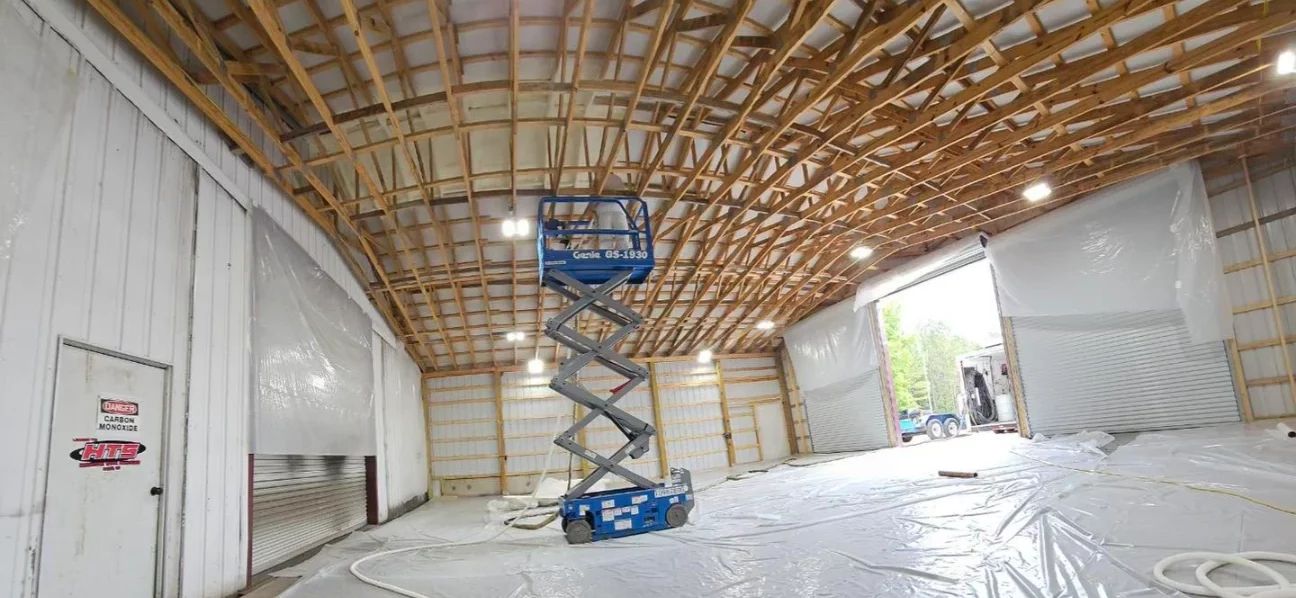
Spray foam insulation in Madisonville, KY is worth considering if moisture control, long-term energy savings, and durability are priorities. Given the area’s seasonal humidity and temperature swings, spray foam offers an effective seal against both air leaks and moisture intrusion—factors that directly impact HVAC load and indoor comfort. Unlike traditional materials, spray foam bonds directly to framing and sheathing, preventing gaps that often form over time.
Property owners seeking tighter building envelopes and consistent indoor temperatures will benefit most. However, the material requires proper installation and isn’t always the right fit for every structure or budget. The sections below provide clear data, direct comparisons, and experienced insights to help homeowners make informed decisions.
Experience-based evaluation is drawn from on-site inspections and hundreds of local installations across crawl spaces, attics, and wall cavities in Hopkins County. The data reflects first-hand outcomes and practical field performance across varying property types.
Madisonville, KY experiences high humidity in summer and occasional winter cold snaps. Spray foam’s closed-cell option resists moisture and adds structural reinforcement, while open-cell offers sound dampening and flexibility where movement or vibration is expected.
| Insulation Type | Air Sealing Capability | R-Value per Inch | Moisture Resistance | Ideal Application Area | Longevity |
|---|---|---|---|---|---|
| Spray Foam (Closed) | High | 6.0–7.0 | Excellent | Attics, basements, crawl spaces | 20+ yrs |
| Spray Foam (Open) | High | 3.5–4.0 | Moderate | Interior walls, soundproofing | 15–20 yrs |
| Blown-In Cellulose | Low | 3.2–3.8 | Low | Attics, wall cavities | 10–15 yrs |
| Fiberglass Batt | Low | 2.9–3.8 | Poor | Walls, ceilings | 10–15 yrs |
| Mineral Wool | Moderate | 3.7–4.3 | Good | Fire-rated assemblies, basements | 15–20 yrs |
| Specification | Closed-Cell Spray Foam | Open-Cell Spray Foam |
|---|---|---|
| R-Value (Thermal Resistance) | 6.5/inch | 3.8/inch |
| Vapor Permeability | < 1.0 perm | 10–16 perms |
| Air Impermeability | Yes | Yes |
| Water Absorption | < 1% | ~5% |
| Density | 1.75–2.0 lb/ft³ | 0.4–0.6 lb/ft³ |
| Application Thickness | 1–2 inches (min) | 3+ inches (avg) |
Bonus Tip: For crawl spaces prone to ground moisture, closed-cell spray foam over a vapor barrier drastically reduces humidity intrusion and deters mold growth.

Bonus Tip: Installers often apply too little foam to cut costs. Always verify cured thickness aligns with the thermal target using core samples or thermal imaging.
Open, unfinished attics with stable air circulation or low-use buildings may not need the air-sealing benefits of spray foam. Blown-in cellulose or fiberglass batts provide lower-cost alternatives with acceptable performance for short- to mid-term usage.
Attics, crawl spaces, rim joists, and basement walls in homes with HVAC loss, draft complaints, or visible moisture issues.
Yes, once cured. Professional installation ensures safe expansion and ventilation. Occupants typically return after 24 hours.
Yes, but it depends on framing integrity and air leakage pathways. A preliminary blower door test helps assess needs.
Closed-cell foam maintains performance for over 20 years if installed correctly and protected from UV exposure.
Spray foam insulation delivers long-term benefits when matched to the building’s needs. It suits Madisonville properties exposed to moisture, temperature extremes, or recurring drafts. For others, simpler materials may suffice. Consider building age, layout, ventilation, and planned occupancy before committing to installation.
For help assessing if spray foam insulation is right for your home or facility in Madisonville, contact Armored Insulation. Email [email protected] or call (270) 331-4844 for technical insights, site evaluations, and solution planning tailored to local structures and climate.
Use infrared imaging or request cured sample cuts from the installer. Coverage gaps or underfilled areas often show as thermal voids.
No. Old insulation must be removed to ensure proper adhesion and full cavity fill.
Homes with energy-efficient improvements like spray foam often appraise higher, particularly in areas with seasonal extremes.
None for the foam itself. Periodic inspections of roof and wall integrity help preserve insulation performance.
Small sections can be patched. Larger damage may need removal and reapplication by certified crews.